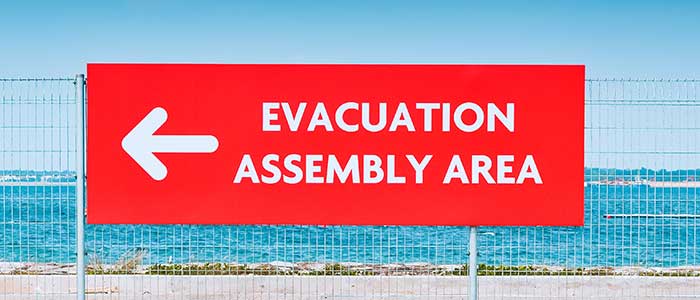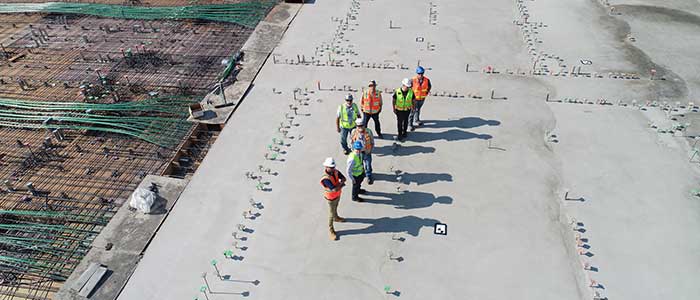Dashpivot article page – What is considered a near miss

What is considered a near miss?
How do we define a near miss in the context of workplace safety?
A near miss in simpler terms is an almost accident, but we will dive into more detail in this article to really understand what is considered a near miss, so that you can ensure you are reporting near misses inline with safety requirements.
In the event of a near miss, nothing bad or harmful happened to an employee or object either because of chance or timely intervention. It is considered as an early warning of a potential hazard in the workplace which should be reported and addressed immediately before someone is hurt or something is damaged.
A characteristic that easily defines an incident to be a near miss is that it causes no actual but potential harm. Although mostly associated with the safety of employees, near misses might also include damages with items, properties or surroundings. It can occur in any environment and industry, most common in construction and manufacturing industries, but also occurring in healthcare, office settings, retail, transportation, hospitality, education sector, aviation, oil and gas, and many more.
With these characteristics easily recognisable, employees should report them as soon as they are recognised. Proper actions to mitigate risks are to investigate the near misses by documenting all the details, communicate the incident to the entire team, address the hazards and enhance safety protocols, and if necessary, update policies and practices.
What is Considered a Near Miss Across Different Industries?
Of course all industries experience near misses, probably most of the time, and what is considered a near miss is also industry based, because the nature of the work dictates the nature of the near miss.
It’s important to have a means to report these near misses to identify hazards in their early stages and avoid injuries, damages, and fatalities. Knowing that near misses can be similar and also unique in characteristics across different types of industries will be able to help organisations develop tailored safety protocols in every site or workplace. Similar ones are slips, trips, calls, equipment malfunction, human error, electrical hazards, blocked exits, fire hazards, and more.
The unique ones are industry-specific like medication mix ups and contamination risks in the healthcare industry, scaffolding issues in the construction industry, conveyor belt malfunction and assembly line issues in the manufacturing industry, gas leaks and drilling hazards in the energy industry, docking mistakes in the transportation industry, pesticide exposure and animal nearly injuring an employee in the agriculture industry, loose rocks and misfire explosives in the mining industry, and many more.
Aside from employees and workers being fully aware and equipped to address near-miss hazards, it’s also important to be versatile and adaptable to any situation. Many things can happen on site and in the workplace, so recognising patterns, unique contents, and challenges in each type of industry is essential for organisations to build a safe workplace.
What Challenges Prevent People from Reporting Near Misses?
Despite an organisation promoting a safe workplace or having rules about near misses, employees might still avoid reporting them. There are several challenges but organisations should still be equipped and prepared with the possibility of having near misses not being reported diligently.
One of the common challenges is employees having the fear of blame or disciplinary actions. It could be an employee’s personality or lack of awareness, or a result from the workplace culture not promoting a “free-of-blame” mindset when reporting near misses. There should still be proactive approaches to address employees who may not speak up when an incident arises. Although the organisation promotes a blame-free safety culture, some individuals may stray far away from the organisation’s culture and place blame on persons reporting near misses.
As an effective approach, first, clearly communicate to everyone in the organisation that reporting near misses will definitely not result in some sort of punishment. Instead, there should be a recognition or reward for reporting.
Secondly, there should be education and training in practicing mindfulness, empathy, and mutual respect between employees. And thirdly, in order to protect reporters, the organisation may establish anonymous reporting by utilising online forms and suggestion boxes, and ensuring only certain personnel have access to the near miss reports to maintain anonymity.
Why Do Near Misses Matter in the Workplace Safety Culture?
There's a chance that you might think reporting every near miss is overkill, or that you may have even heard words along the lines of why is it important to report a near miss?
Near misses are undesirable but they serve as opportunities to improve safety practices in the workplace. They expose the weak practices, systems, and processes and the organisation should ensure that they are addressed immediately as possible through proactive practices like implementing a culture of safety and initiative, reporting and analysing near misses, updating the safety protocols, and many more.
Employees, safety officers, the management, and everyone in the organisation should proactively participate and contribute to having a safety culture in the workplace. Near miss reporting should also be integrated with regular training, leadership support, updating safety protocols, effective communication, and a lot more to create a safer and more accountable work environment.
Near miss reporting matters because it builds trust among the employees and management, promotes commitment in employee well-being, and fosters an environment where sharing responsibilities is highly encouraged. Everyone should actively participate in safety management by making sure themselves and others are safe every day in the workplace.

Hazard Report template
Document and report hazards quickly and thoroughly to keep everyone safe.

Safety Improvement Plan template
Create coherent, actionable and professional safety plans using this proven framework.

Safety Toolbox Talk template
This toolbox talk template is quick and easy to complete and signoff on site, and keeps all of your toolbox talks neatly organised and professional.